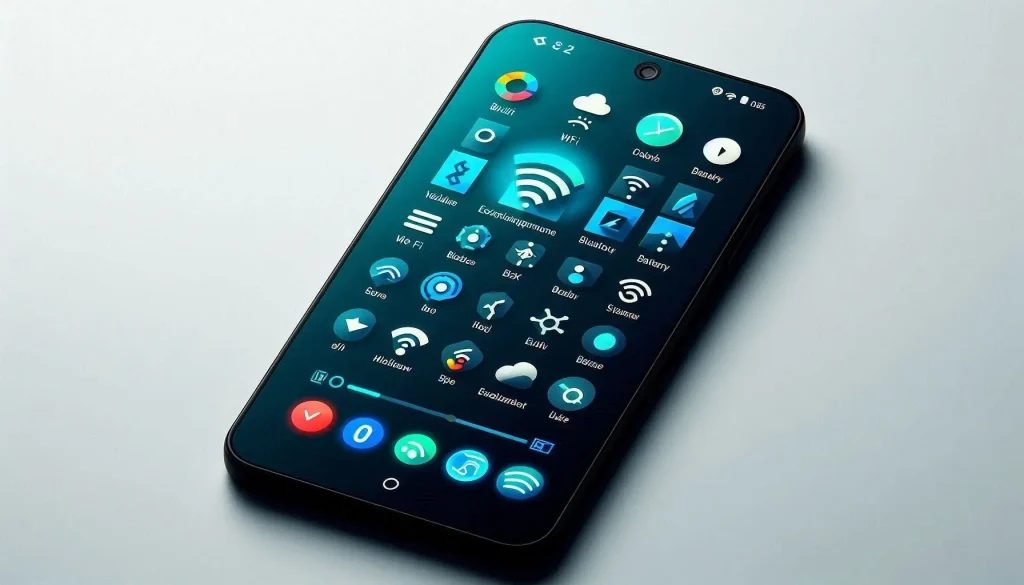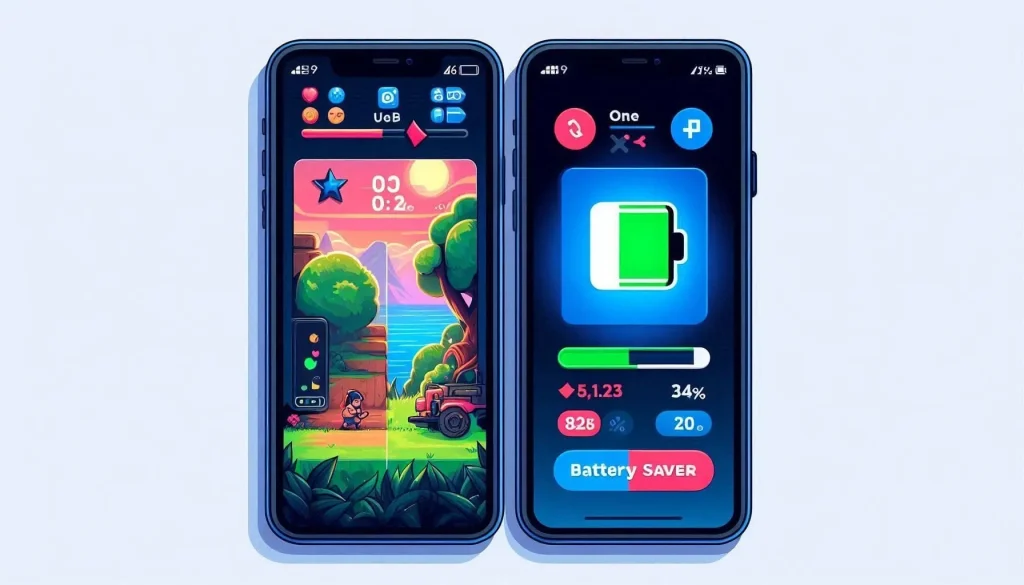Ever felt like your Android phone is holding back on its true potential? You’re not entirely wrong. Beneath the surface of the familiar interface lies a treasure trove of hidden features waiting to be explored. These features, often tucked away from plain sight, can significantly enhance your smartphone experience, boost your productivity, and even unlock a layer of personalization you never knew existed.
This comprehensive guide delves into the world of Android hidden features, equipping you with the knowledge and steps to unlock a phone that works smarter and caters to your unique needs.
Android Hidden Features: Unveiling the Secrets of Your Smartphone
While the core functionalities of your Android phone are readily accessible, a treasure trove of hidden features lies just beneath the surface. These features, deliberately kept out of the spotlight by developers, cater to a diverse range of user preferences and can significantly enhance your phone’s capabilities.
What are Androids Hidden Features?
Android hidden features are functionalities embedded within the operating system that aren’t readily apparent to the average user. These features might be disabled by default, require specific activation processes, or be buried deep within settings menus. They offer a range of benefits, including:
- Enhanced Functionality: Hidden features can unlock functionalities you never knew your phone possessed, like one-handed mode for convenient single-hand usage or split-screen multitasking for juggling multiple apps simultaneously.
- Increased Productivity: Features like notification history or app timers can help you stay organized and manage your time more effectively.
- Personalized Experience: Hidden features allow you to customize your phone’s interface and behavior to better suit your preferences. From tailoring the status bar to activating hidden developer options, you can truly make your phone your own.
By exploring these hidden features, you can transform your Android phone from a basic communication tool into a productivity powerhouse or a personalized entertainment hub.

Accessing the Hidden Goodies: Unlocking Developer Options
The first step to unlocking the hidden potential of your Android phone lies in activating Developer Options. This menu, primarily intended for app developers and advanced users, grants access to a plethora of settings that can fine-tune your phone’s behavior and unlock hidden functionalities.
Activating Developer Options:
The process for activating Developer Options is straightforward but might differ slightly depending on your specific Android version. Here’s a general guideline:
- Navigate to your phone’s Settings menu.
- Scroll down and tap on About Phone or System.
- Locate the Build Number and tap on it rapidly seven times. You’ll see a toast notification informing you that you’re now a developer.
- Return to the main Settings menu. You should now see a new option called Developer Options.
A Word of Caution:
While Developer Options offer a vast array of customization possibilities, it’s crucial to exercise caution. Some settings can alter your phone’s behavior in ways that might impact performance or stability. It’s recommended to only modify settings you understand and research any unfamiliar options before tinkering.
Mastering Multitasking: Split-Screen Magic on Android
Juggling between multiple apps on your phone can be a hassle, especially on smaller screens. Thankfully, Android offers a hidden gem called Split-Screen mode, allowing you to seamlessly work with two apps simultaneously.
Split-Screen Basics:
Activating Split-Screen mode is a breeze:
- Open the first app you want to use in split-screen.
- Navigate to the Recent Apps menu (typically accessed by swiping up from the bottom of the screen and holding).
- Tap and hold the icon of the first app.
- Select Use in split screen from the pop-up menu.
- Choose the second app you want to display alongside the first one from the list of available apps.
Now, your screen will be divided into two sections, showcasing both apps simultaneously. You can adjust the size of each window by dragging the dividing line in the center.

Advanced Split-Screen Techniques:
Split-screen mode offers more than just basic multitasking. Here are some advanced techniques to maximize its potential:
- Swap App Positions: Simply drag the top app downwards or the bottom app upwards to switch their positions.
- Launch Apps in Split-Screen: Long press on an app icon in your home screen or app drawer and select Use in split screen to directly launch it alongside your current app.
- Resize Apps Unevenly: You can hold down the dividing line and tap on the resize icon (often an arrow) to adjust the size ratio between the two apps.
By mastering Split-Screen mode, you can efficiently manage your workflow, compare information from different apps side-by-side, or multitask like a pro.
Peek Power: A Glimpse into Notifications without Unlocking
Constantly unlocking your phone to check notifications can be disruptive and drain your battery. Thankfully, Android offers a hidden feature called Peek Notification that allows you to discreetly preview your alerts without fully unlocking your device.
Enabling Peek Notification:
The availability and activation process for Peek Notification might vary depending on your Android version and device manufacturer. Here’s a general approach:
- Navigate to your phone’s Settings menu.
- Search for Notifications or Apps & notifications.
- Look for an option related to Peek notifications or Advanced notifications. Enable the relevant setting.
Customizing Peek Settings:
With Peek Notification enabled you can further customize its behavior to suit your preferences. Here are some potential options you might encounter:
- Show Peek content: Choose whether you want to see the full notification content or just the app icon and notification title.
- Delay Peek notification: Set a delay for how long the notification preview remains visible after you pick up your phone or hover your hand over it (if your device supports this feature).
Benefits of Peek Notification:
Peek Notification offers several advantages:
- Privacy: You can quickly glance at notifications without revealing their full content on the lock screen, protecting sensitive information from prying eyes.
- Efficiency: It eliminates the need to constantly unlock your phone, saving time and battery life.
- Reduced Interruptions: You can decide which notifications deserve your immediate attention and avoid being pulled away from tasks for trivial alerts.
By leveraging Peek Notification, you can achieve a balance between staying informed and maintaining focus on the task at hand.
Notification History: Retrieving Missed Alerts
Ever accidentally swiped away a notification before you had a chance to read it? Fear not! Android offers a hidden feature called Notification History, which acts as a log of all your past notifications.
Accessing Notification History:
Unfortunately, Notification History isn’t a universally available feature on all Android devices. However, some manufacturers include it as a built-in functionality. Here are a couple of ways to check if your device has a Notification History:
- Search Settings: Open your phone’s Settings and search for “Notification History.” If the feature exists, it should appear in the search results.
- Third-Party Apps: If your device lacks a built-in Notification History, you can explore third-party apps that offer similar functionalities. Make sure to download apps from reputable sources and review their permissions carefully before installation.
Benefits of Notification History:
Having access to Notification History provides several benefits:
- Missed Notification Recovery: You can retrieve notifications you accidentally dismissed or simply didn’t notice when they arrived.
- Important Information Retrieval: If you need to recall details from a past notification, Notification History can act as a handy reference point.
- Improved Organization: Notification History can help you stay organized by keeping track of all your alerts, even if you haven’t had a chance to address them immediately.
While the availability of Notification History might vary, it’s a valuable tool for anyone who wants to ensure they never miss an important notification again.

One-Handed Mode: Convenience at Your Fingertips
Using your phone with one hand can be a challenge, especially on devices with larger screens. Thankfully, Android offers a hidden gem called One-Handed Mode, which shrinks the usable screen area to a more manageable size for single-handed operation.
Activating One-Handed Mode:
The method for activating One-Handed Mode can vary depending on your device and Android version. Here are some common approaches:
- Gesture-Based Activation: Some devices allow you to activate One-Handed Mode by swiping diagonally across the bottom of the screen from one corner to the other (often from left to bottom corner towards the right).
- Navigation Bar Shortcut: If your device uses on-screen navigation buttons, you might find a dedicated shortcut for One-Handed Mode within the navigation bar itself. Look for an icon resembling a smaller screen or an arrow.
- Settings Activation: On some devices, One-Handed Mode might be buried within the Settings menu. Navigate to Settings > System > Advanced (or similar options) and search for One-Handed Mode.
Benefits and Use Cases:
One-Handed Mode offers several advantages:
- Improved Accessibility: Users with limited hand mobility or those holding the phone in one hand while performing other tasks can benefit significantly from a more compact screen size.
- Enhanced Control: Reaching all corners of the screen becomes easier with a reduced screen area, minimizing accidental touches and typos.
- Increased Comfort: One-handed operation can be more comfortable for extended periods, especially on larger phones.
Here are some situations where One-Handed Mode comes in handy:
- Commuting on public transport while holding onto a handrail.
- Balancing a coffee in one hand while checking your phone.
- Taking photos with one hand while holding the subject with the other.
By mastering One-Handed Mode, you can ensure seamless and comfortable phone usage even when you’re limited to single-handed operation.

Easter Eggs: Fun and Quirky Discoveries in Android
Android is known for its playful side, and hidden within the operating system are a variety of Easter Eggs – fun and quirky discoveries waiting to be unearthed. These Easter Eggs can range from simple animations to interactive games, offering a delightful surprise for curious users.
Examples of Popular Android Easter Eggs:
- Android Versions: Each Android version, named after a dessert (Lollipop, Marshmallow, Nougat), often has a hidden Easter Egg related to its namesake.
- Android Blob: This animated blob character has appeared in various Easter Eggs throughout Android versions. Tapping and interacting with it can unlock hidden animations or games.
- Game Easter Eggs: Some built-in apps like the Calculator or Google app might have hidden games accessible through specific key combinations.
Finding Hidden Easter Eggs on Your Device:
The specific steps to access Easter Eggs can vary depending on your Android version and device manufacturer. Here are some general tips for your exploration:
- Search Online: The internet is a treasure trove of information on Android Easter Eggs. Search for your specific Android version and device model to uncover known Easter Eggs.
- Experimentation: Sometimes, the joy lies in the discovery itself. Try tapping and holding on various logos, icons, or system elements within your phone’s interface. You might stumble upon a hidden surprise.
Remember: Easter Eggs are primarily for entertainment purposes and may not offer any significant functionality. However, they add a touch of whimsy to the Android experience and showcase the playful nature of the operating system.
Customizing the Status Bar: Tailoring Information at a Glance
The status bar at the top of your Android screen provides quick access to essential information like signal strength, battery life, and time. However, did you know you can customize the status bar to display the information that matters most to you?
Editing Status Bar Icons:
The ability to edit status bar icons might vary depending on your Android version and device manufacturer. Here’s a general approach to explore:
- Navigate to your phone’s Settings menu.
- Search for Notifications or System UI.
- Look for an option related to the Status bar or Notification icons.
You might find options to:
- Rearrange icons: Drag and drop icons to change their order within the status bar.
- Disable unwanted icons: Some icons might offer a toggle to be disabled entirely, hiding them from the status bar for a cleaner look.
Rearranging Quick Settings Tiles:
The quick settings panel, accessible by swiping down twice from the top of the screen, provides shortcuts to frequently used settings like Wi-Fi, Bluetooth, and airplane mode. You can customize this panel for optimal convenience.
- Swipe down twice from the top of your screen to fully expand the quick settings panel.
- Locate the Edit button (often an icon resembling a pencil or grid).
- Drag and drop the quick setting tiles to rearrange them based on your usage preferences.
- You might also be able to add or remove tiles from the panel, allowing you to tailor it to your specific needs.
Benefits of Customization:
Customizing the status bar and quick settings panel offers several advantages:
- Improved Efficiency: By prioritizing the information and settings you use most frequently, you can access them more quickly without navigating through menus.
- Enhanced User Experience: Tailoring the status bar and quick settings to your preferences creates a more personalized and intuitive user experience.
- Reduced Clutter: Removing unwanted icons from the status bar declutters your screen and provides a cleaner visual experience.
By taking advantage of these customization options, you can transform the status bar and quick settings panel into powerful tools for optimizing your phone’s usability.

System UI Tuner: Fine-Tuning the User Interface (Android 6.0 – 9.0)
For users with Android versions between 6.0 (Marshmallow) and 9.0 (Pie), a hidden gem called System UI Tuner offers even more granular control over the user interface.
Activating System UI Tuner:
While not officially supported in later Android versions, System UI Tuner can be a valuable tool for these specific versions. Here’s how to activate it (Note: This process might not work on all devices):
- Swipe down twice from the top of the screen to expand the quick settings panel.
- Locate the settings icon (cogwheel) tap and hold on to it for a few seconds.
- If successful, you’ll see a new option called System UI Tuner appear within your Settings menu.
System UI Tuner Options:
System UI Tuner provides a range of options for fine-tuning the user interface, including:
- Status bar icon visibility: You can choose which icons appear in the status bar beyond the default options.
- Do not disturb customization: Tailor the behavior of the Do Not Disturb mode.
- Customize the lock screen: Modify elements displayed on the lock screen.
Important Note:
It’s crucial to exercise caution while using the System UI Tuner. Some settings might alter your phone’s behavior in unexpected ways. Make sure to research any unfamiliar options before modifying them.
Google Assistant: Enhanced Functionality with Hidden Commands
While most users are familiar with basic Google Assistant commands like “Hey Google, set an alarm,” there’s a treasure trove of hidden commands waiting to be discovered. These hidden commands can unlock a plethora of functionalities and significantly enhance your interaction with your Android phone.
Exploring Hidden Commands:
Unfortunately, there’s no single definitive list of all hidden Google Assistant commands. New commands are added and some are removed over time. However, here are some resources to get you started:
- Official Google Assistant Help: The official Google Assistant support page (https://support.google.com/assistant/?hl=en) provides a comprehensive list of common commands categorized by functionality. While it might not explicitly list hidden commands, exploring these categories can spark ideas for further exploration.
- Online Resources: A quick web search for “hidden Google Assistant commands” can yield a wealth of information from tech blogs and enthusiast communities. These resources often compile user-discovered commands and categorize them for easy reference.
Examples of Hidden Commands:
Here are a few examples of hidden Google Assistant commands to pique your interest:
- Find my phone: Even when your phone is on silent mode, saying “Hey Google, find my phone” will make it ring, helping you locate it easily.
- Sing me a song: Feeling bored? Ask Google Assistant to “sing me a song” and it might surprise you with a delightful tune.
- Tell me a joke: In need of a quick laugh? “Hey Google, tell me a joke” might just do the trick.
Benefits of Utilizing Hidden Commands:
By venturing beyond the basic commands, you can unlock a range of benefits:
- Increased Efficiency: Hidden commands can automate tasks and access information more quickly, saving you time and effort.
- Enhanced Entertainment: Fun and quirky hidden commands can add a touch of entertainment to your phone experience.
- Personalized Experience: Discovering hidden commands that cater to your specific needs and preferences can personalize your interaction with Google Assistant.
Remember, exploring hidden commands is an ongoing journey. Keep an eye on online resources and experiment with different phrases to unlock the full potential of Google Assistant.

Gaming Mode: Unleashing the Inner Gamer (Android 9.0 and Above)
For mobile gamers, Android offers a hidden gem called Gaming Mode (introduced in Android 9.0 Pie). This mode optimizes your phone’s performance for a smoother and more immersive gaming experience.
Activating Gaming Mode:
The method for activating Gaming Mode might vary depending on your device and Android version. Here’s a general approach:
- Open the Settings menu on your phone.
- Navigate to Sound & vibration or Advanced features (depending on your device).
- Look for an option related to Game or Gaming Mode. Enable the toggle switch.
Optimizing Performance for Games:
Once activated, Gaming Mode offers several benefits for gamers:
- Resource Allocation: Gaming Mode prioritizes resources towards the running game, allocating more processing power and graphics memory for a smoother experience.
- Blocking Notifications: Distracting notifications are blocked while you’re playing, ensuring you stay immersed in the game.
- Performance Enhancements: Some devices might offer additional performance tweaks like optimizing touch responsiveness or blocking calls to enhance your gameplay.
Managing Notifications During Gameplay:
Even with Gaming Mode enabled, you might still receive critical notifications like incoming calls. Here’s how to manage them:
- Open the Game Launcher app (if available on your device). This app provides a central hub for managing your games and accessing Gaming Mode settings.
- Look for options related to Notifications within Gaming Mode settings.
- Choose how you want to handle notifications during gameplay. You can choose to block them entirely, allow only priority notifications, or display them as pop-ups without interrupting your game.
Benefits of Gaming Mode:
By utilizing Gaming Mode, mobile gamers can experience:
- Smoother Performance: Reduced lag and improved frame rates for a more enjoyable gaming experience.
- Enhanced Focus: Blocking notifications eliminates distractions and allows you to stay focused on the game.
- Extended Battery Life: Optimizing resource allocation can potentially improve battery life during extended gaming sessions.
Frequently Asked Questions (FAQs)
Here are some commonly asked questions regarding Android hidden features:
Q: Will using hidden features damage my phone?
A: In most cases, using hidden features won’t harm your phone. However, it’s crucial to exercise caution with features within Developer Options. Some settings can alter your phone’s behavior in unexpected ways. Always research unfamiliar options before modifying them.
Q: How do I find out if my phone has a specific hidden feature?
A: The best approach is to search online using keywords related to the feature and your specific Android version and device model. Online resources and tech forums are valuable sources of information for discovering hidden features.
Q: Are there any risks associated with using third-party apps to access hidden features?
A: Yes, there are potential risks. Download apps only from reputable sources and make sure to review their permissions carefully before installation. Some malicious apps might disguise themselves as tools to access hidden features but collect your data or harm your device.
Q: Will hidden features always be available on my phone?
A: Not necessarily. Android updates can sometimes remove or modify hidden features. Additionally, some features might be specific to certain device manufacturers or models.
Q: Where can I learn more about advanced Android features?
A: There are several resources available:
- Official Android Documentation: The official Android developer website offers comprehensive documentation on various functionalities and features within the Android operating system https://developer.android.com/develop.
- Tech Blogs and Websites: Many tech blogs and websites publish articles and tutorials on advanced Android features and functionalities.
- Online Communities: Online communities dedicated to Android can be a great place to ask questions, learn tips, and discover hidden features from other enthusiasts.
Conclusion
The world of Android hidden features is vast and ever-evolving. By venturing beyond the surface-level functionalities, you can unlock a treasure trove of tools and functionalities that can transform your phone into a productivity powerhouse, a personalized entertainment hub, or a powerful gaming device. Embrace the spirit of exploration, delve into the hidden features your Android phone offers, and discover the true potential within your pocket-sized companion.
